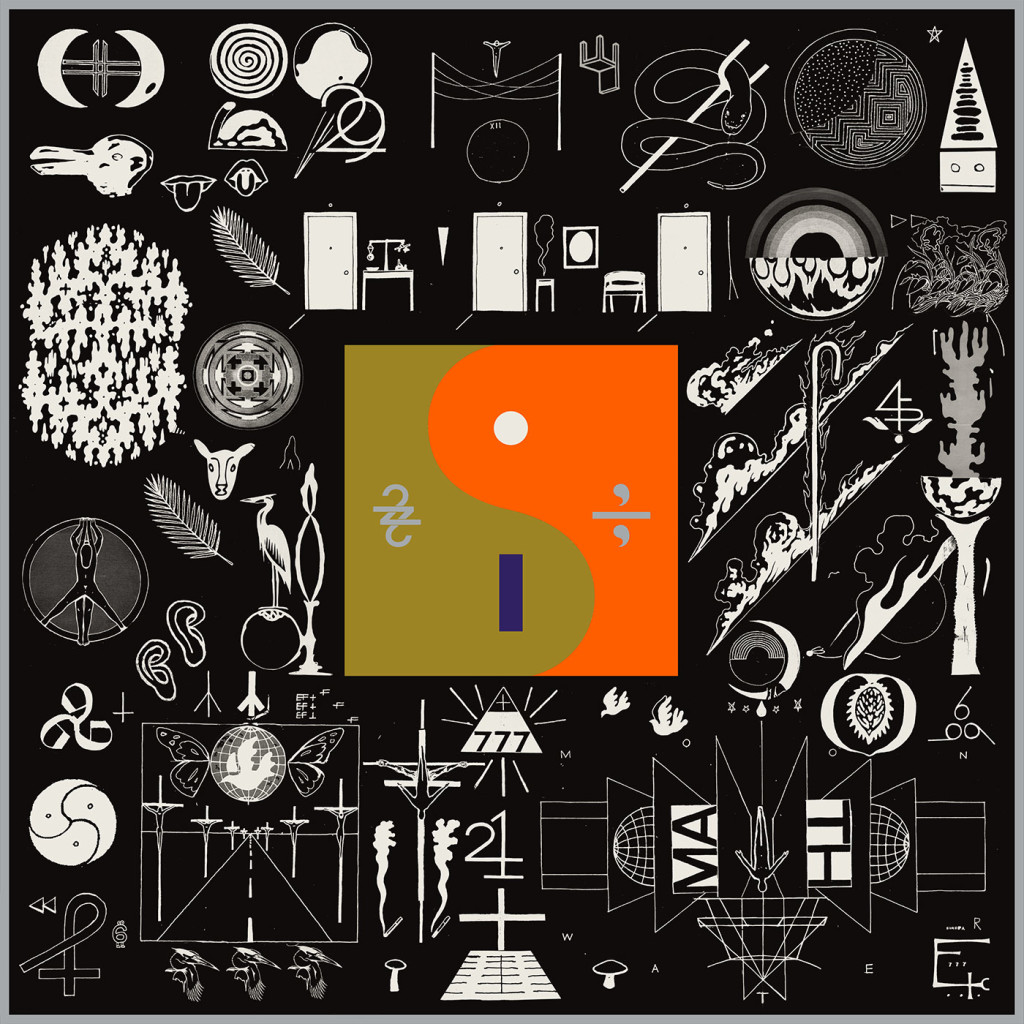
This is not your “Skinny Love.” This is not your “Holocene.”
22, A Million was just released last week on September 30th. It’s been five years since Bon Iver’s last album, Bon Iver, and besides some appearances here and there, notably in James Blake’s “I Need a Forest Fire,” the band has mostly shied from the public eye, and took a break following the unexpected fame.
The break is over. And This is no longer the woodsy, folksy, guitar-dominated sound of the Bon Iver of the past. There’s exaggerated autotune, glitch, cryptic symbols dotting the album cover, song titles, and lyric videos, a Kanye-esque composition of manipulated human voice as instruments.
In the opening track “22 (Over S∞∞N),” a slow single vowel glitch opens, then staggers through a pitched up vocal sample that soon harmonizes with signature Vernon singing, “where you gonna look for confirmation.”
“29 #Strafford APTS” brings back a dominant folksy guitar, among new influences, and at the repeated lyrics, that unmistakably Vernon falsetto takes on a sound reminiscent of a modern Hawaiian mele, with the same nod to the meaning given to a significant space.
In “10 d E A T h b R E a s T ⚄ ⚄,” probably the song most deviant from the Bon Iver we’re familiar with, there’s a kind of radio noise coupled with smooth voice and muffled beat. Crisp high notes escape the muffle, until the muffle wins and traps the voice down again. Repeat. Vernon’s voice struggles with the mechanical muffle seem to symbolize Vernon himself struggling against his own music.
Each track is a journey that takes the listener through different dualities and explorations of sound, space, place, mind.
And with these new sounds, the music still uniquely feels Bon Iver. There’s still that raw emotion, just captured with “new toys,” as Vernon called them in an interview with FactMag. There’s broken sounds that erupt with feeling, similar to the emotional voice cracks employed by other artists such as Sia.
But what does this album mean?
Take the title, 22, A Million, for starters.
“22 stands for Justin,” Trever Hagen, a friend of Justin Vernon’s, writes in an intimate backstory about the album. “A Million is the rest of [the] world: the millions of people who we will never know, the infinite and endless, everything outside one’s self that makes you who you are.”
Hagen’s essay touches on watching Vernon undergo a personal transformation that culminated in the release of this new album, that “means so much more than a piece in an artistic career.”
We learn from Hagen’s piece that 22, A Million is Vernon’s two-decade long struggle for self-understanding, his search for resolution, now made public and put to rest.
For me, it’s the calm through the packed, sweaty, mystery smell subway full of blank faces. It’s a series of soundscapes to explore, soundscapes that enchant and enlighten the open mind, provide an auditory universe of refuge to the weary. Refreshes in the introduction of its fantastic reality, soothes in the unfurling of that reality to blend and fuse with the listener’s needs, and in revealing its own struggles and triumphs, -the gritty and smooth- provides a vulnerability that the listener can give back.
It’s music that speaks to the soul, it’s comfort in chaos, it’s simultaneous rest and awakening.
It’s about duality. The symbols on the cover are very much symbols of duality, yin and yang, god and devil. The tracks themselves continue this. Vernon plays with this composition of rough and smooth, muffled and clear, blurry and sharp, the enigmatic with the relatable. Pitting dualities against each other to see each component each actor more clearly, and achieve a kind of peace and coexistence between the two. In 22, A Million, Bon Iver creates a space, a universe where dualities can coexist in harmony.
And maybe they can in life too. It doesn’t have to just be one way or the other. It’s an acceptance of unknowing, an acceptance of the infinite possibility that exists even when the question always seems to be yes or no, good or evil, quiet or loud, Vernon answers that maybe it can be yes and no, good and evil, with the presence of “33 “GOD”” and “666 ʇ” coexisting in the track list, quiet and loud, rough and smooth, synthetic and natural. Self and others.
The album encourages a meditation on duality, and perhaps emphasizes the dualities within each of us: the us we put on display for the outside world, and the us we face when we look into the mirror when we’re home alone.
This is music that’s alive.
Image from here.
